Norfolk is a county situated in East Anglia, England, well-known for its numerous reserves and natural landscapes. Apart from its picturesque coastline, the county is also home to a diverse range of birds.
Norfolk is considered one of the best areas in the country for birdwatching, drawing enthusiasts from all over the world.
The county’s landscape, including its salt marshes, rivers, and wetlands, provide a suitable habitat for a variety of species throughout the year.
From majestic raptors to brightly-colored kingfishers and charming songbirds, Norfolk is a bird lover’s paradise.
In this article, we will explore the different types of birds that inhabit Norfolk’s countryside and coastal areas.
1. Bitterns
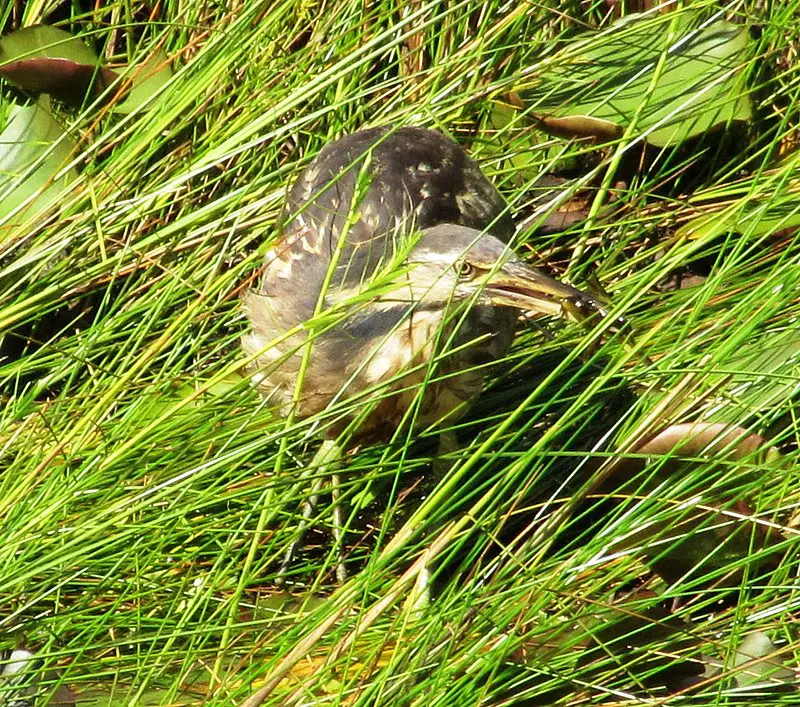
Bitterns are a type of heron, belonging to the Ardeidae family. They have shorter necks and tend to be more secretive than other members of this group.
These birds can usually be found near reed beds or wetlands, where they make their distinctive ‘booming’ call as part of their mating ritual.
Bitterns feed on insects, fish and amphibians which inhabit these areas – catching them with their long pointed bills.
Although bitterns are well camouflaged due to their brown-and-black striped feathers when standing still among reeds, they will fly away quickly if disturbed by humans nearby.Scientific classification:
| Kingdom | Animalia |
| Phylum | Chordata |
| Class | Aves |
| Order | Pelecaniformes |
| Family | Ardeidae |
| Subfamily | Botaurinae Reichenbach, 1850 |
Also Featured In: Most Common Birds in China, Birds Found in Hungary
2. Golden Pheasant
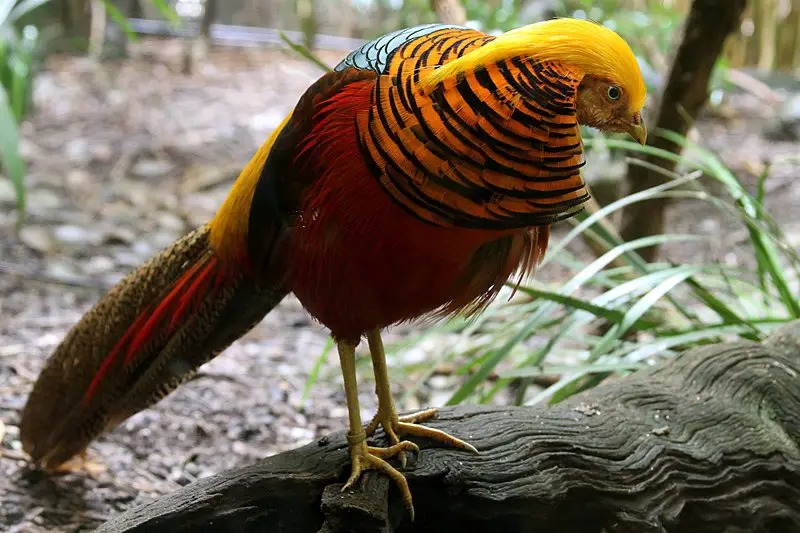
The golden pheasant is a beautiful bird of the Galliformes family and Phasianidae order. It has an exotic look thanks to its bright feathers and crest that have golden hues.
Native to mountainous areas of western China, it can be found in forests there. Its scientific name Chrysolophus pictus reflects this, as “Chrysolophos” means “with a golden crest”.
While “pictus” refers to being painted or decorated with colors such as gold, red, yellow and green on its body.
The male’s colorful plumage makes for an impressive sight.Scientific classification:
| Kingdom | Animalia |
| Phylum | Chordata |
| Class | Aves |
| Order | Galliformes |
| Family | Phasianidae |
| Genus | Chrysolophus |
| Species | C. pictus |
3. Stone-Curlew

Stone-curlews, also known as dikkops or thick-knees, are a family of birds that have adapted to live in tropical and temperate regions throughout the world.
They can be found in Africa, Asia and Australia with two or more species per region. Despite being classified as waders, most prefer dry arid habitats over moist wetlands.
Stone-curlews typically have long legs which help them navigate through their preferred terrain efficiently; some species even stand at an impressive height when standing on those long legs.
Additionally they feature cryptic plumage which helps them blend into their surroundings while hunting for prey such as insects and small mammals like rodents.
These unique bird’s calls are easily recognizable; it has been said that hearing one is similar to listening to someone whistling ‘Keee Weee’.Scientific classification:
| Kingdom | Animalia |
| Phylum | Chordata |
| Class | Aves |
| Order | Charadriiformes |
| Suborder | Chionidi |
| Family | Burhinidae Mathews, 1912 |
Also Featured In: Beautiful Brazilian Birds, Common Uzbekistan Birds
4. Bean Goose
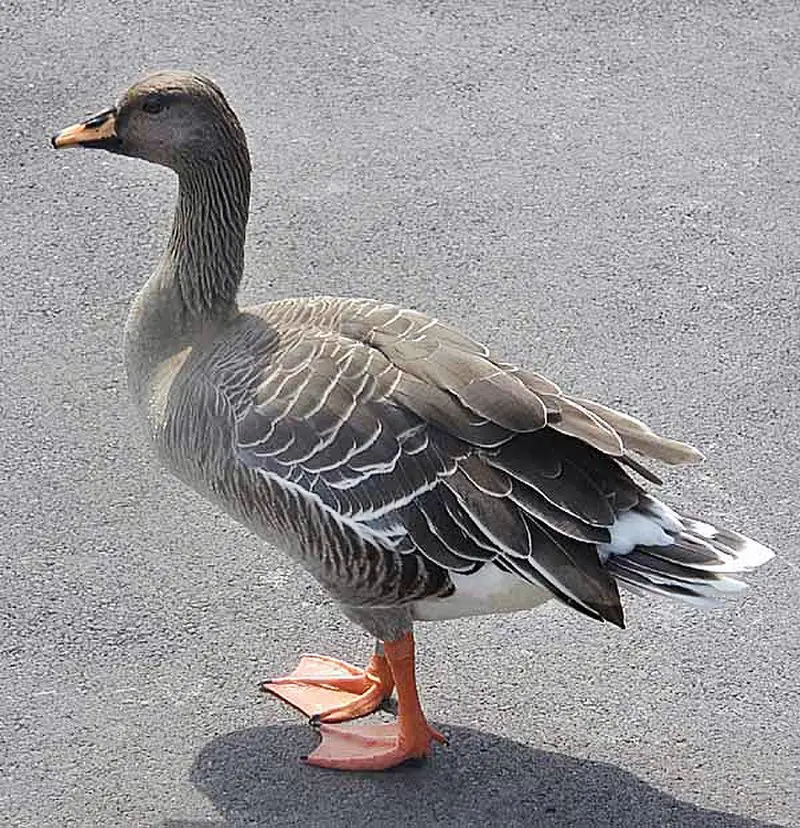
The Taiga Bean Goose is a medium sized waterfowl species that breeds in northern Europe and Asia. It has an elegant grey-brown plumage with black barring on its wings and tail, which makes it easy to identify amongst other geese.
In the winter months, this migratory bird moves further south for warmer climates.
The American Ornithological Society recognizes two subspecies of bean goose – tundra bean goose and taiga bean goose whereas some other authorities consider them as one species.
The diet of this majestic creature mainly consists of aquatic plants such as grasses, sedges or cereals depending upon season availability during migration periods.Scientific classification:
| Kingdom | Animalia |
| Phylum | Chordata |
| Class | Aves |
| Order | Anseriformes |
| Family | Anatidae |
| Genus | Anser |
| Species | A. fabalis |
Also Featured In: Russian Birds, Common Slovakian Birds
5. Long-Billed Dowitcher

The Long-billed Dowitcher is a beautiful shorebird with an unmistakable long bill. During breeding season, they are characterized by their rufous head and underparts combined with a dark mottled back and large white upper rump only visible when in flight.
These birds can be found in freshwater habitats all over the world, where they forage underwater using their long bills to seek out aquatic invertebrates such as insects or small crustaceans.
They also feed on plant material like seeds and berries during times of scarcity.
The Long-billed Dowitcher is an important species for ecological balance due to its unique feeding habits that help control populations of certain insect pests, which makes it one of the most valuable bird species around us.Scientific classification:
| Kingdom | Animalia |
| Phylum | Chordata |
| Class | Aves |
| Order | Charadriiformes |
| Family | Scolopacidae |
| Genus | Limnodromus |
| Species | L. scolopaceus |
Also Featured In: Top Birds Found in Mexico, Birds in Calgary You’ll Love to See
6. Avocets
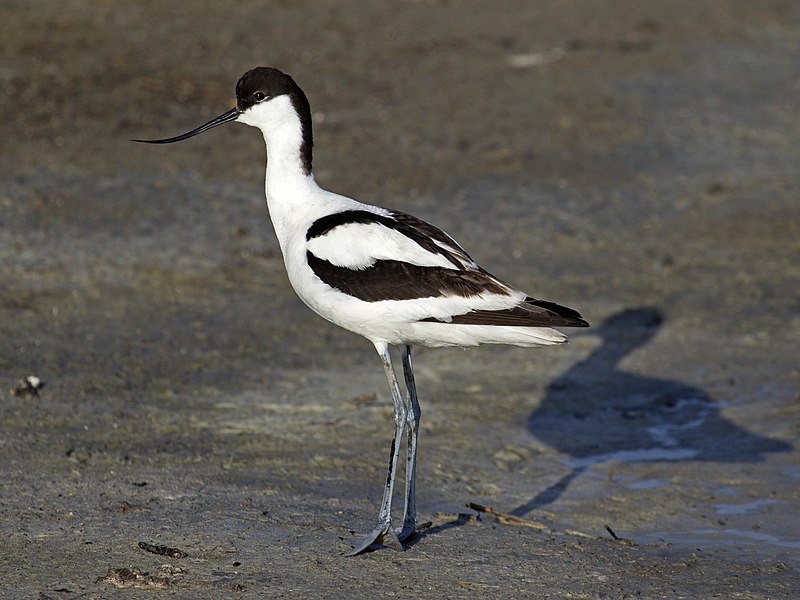
Avocets are elegant wading birds belonging to the same avian family as stilts. These birds have long and slender legs which they use for sweeping their curved bills through shallow water in order to find food like insects, crustaceans, fish eggs etc.
The name of this species is derived from Italian’s ‘avosetta’ and Latin words: recurvus (meaning ‘curved backwards’) and rostrum (‘bill’).
Avocets inhabit wetlands all over the world with some variations in color among different populations.
They build nests using mud or grasses on islands or remote areas surrounded by water bodies where they can feed safely without any disturbance from predators.
With its striking black-and-white plumage pattern along with upturned bill, these graceful creatures make an enchanting sight when seen flying together near wetland sites.Scientific classification:
| Kingdom | Animalia |
| Phylum | Chordata |
| Class | Aves |
| Order | Charadriiformes |
| Family | Recurvirostridae |
| Genus | Recurvirostra Linnaeus, 1758 |
Also Featured In: Egyptian Birds, Common United Arab Emirates Small Birds
7. Red-Backed Shrike
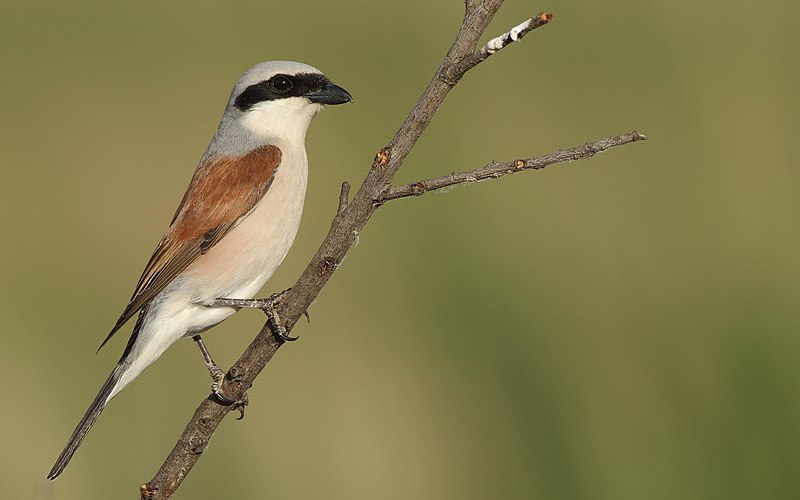
The Red-backed Shrike is a beautiful member of the shrike family, found in western Europe and central Russia. It is easily identified by its gray mantle, black wings with white spots and red back.
In summer it migrates to eastern tropical Africa or southern Africa where they overwinter.
This bird feeds mainly on insects but also eats small mammals, reptiles and other birds as well as fruit occasionally.
They are known for their hunting techniques which include perching high up in trees then diving down onto their prey below them before returning to eat it at leisure elsewhere.
The Red-backed Shrike is an impressive sight that lives both in our gardens and far away places.Scientific classification:
| Kingdom | Animalia |
| Phylum | Chordata |
| Class | Aves |
| Order | Passeriformes |
| Family | Laniidae |
| Genus | Lanius |
| Species | L. collurio |
Also Featured In: Bulgarian Birds, Common Estonian Birds
8. Bearded Reedling
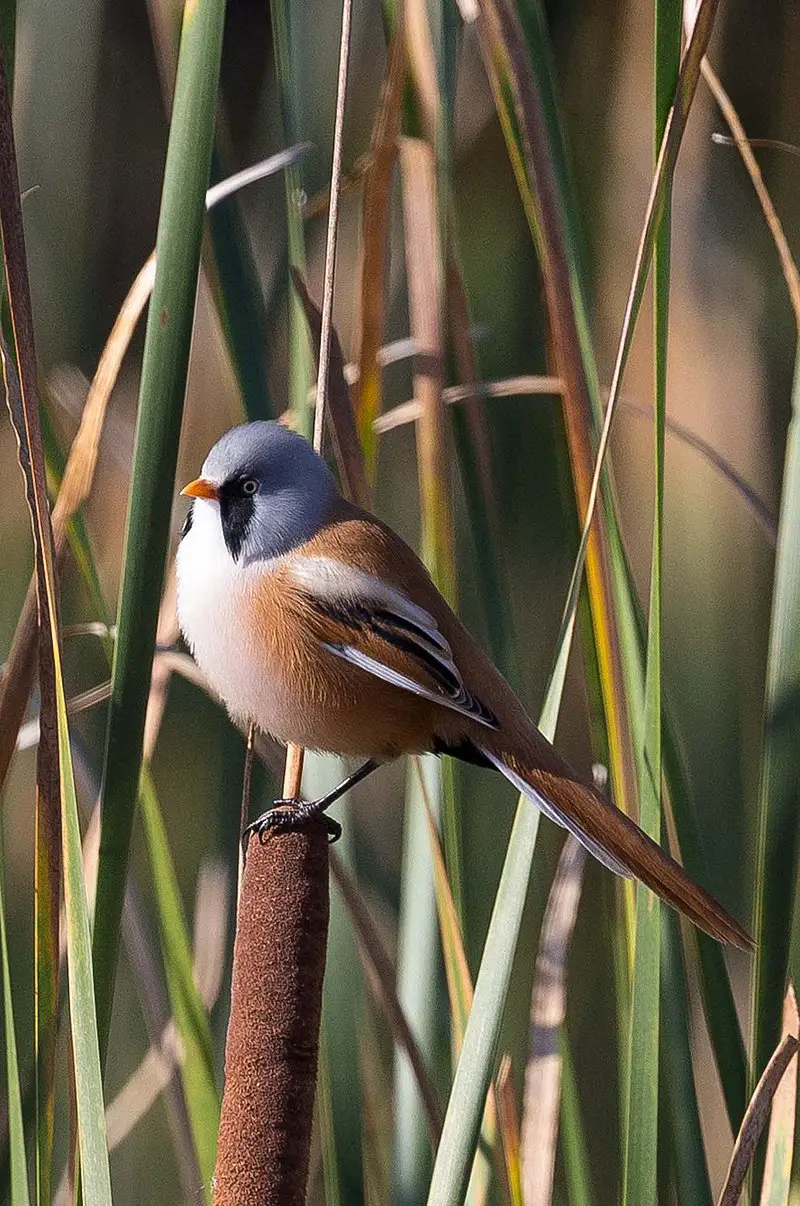
The Bearded Reedling is a small passerine bird found in reed-beds across Europe, Asia and North Africa.
It is easily identified by its distinct black and white plumage with males having yellow faces.
This species belongs to the only family of birds known as Panuridae and was first described by Carl Linnaeus back in 1758.
They feed on insects such as beetles, flies, moths among others but also consume seeds from plants like sedges or rushes during winter months when food availability decreases significantly.
These birds are territorial meaning that they have their own area where they live which can vary from 8 to 12 hectares depending on the seasonality of insect abundance within these areas making them an important part for maintaining healthy ecosystems in wetlands around their range.Scientific classification:
| Kingdom | Animalia |
| Phylum | Chordata |
| Class | Aves |
| Order | Passeriformes |
| Family | Panuridae Des Murs, 1860 |
| Genus | Panurus Koch, 1816 |
| Species | P. biarmicus |
Also Featured In: Birds of United Kingdom, Turkey Birds You Should Know
9. Hawfinch
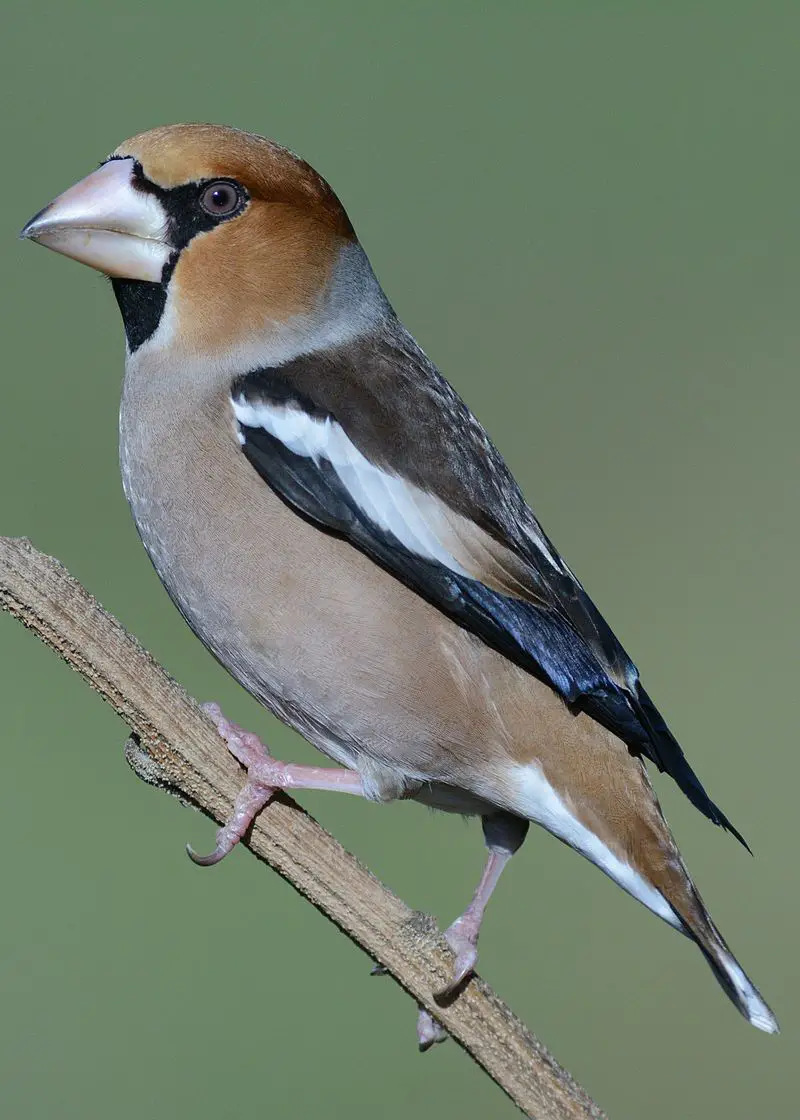
The Hawfinch is a stunning passerine bird of the finch family. It lives in Europe, North Africa, and parts of Asia and stands out for its large size amongst other members of its family.
Its most recognizable feature is its bulky bill which it uses to crack open hard nuts like hazelnuts and cherry stones.
The male has bright pinkish-red underparts while the female’s are more dull browns or greys.
Both sexes also have distinctive black wings with white patches towards their tips. Their closest living relatives are found across East Asia as well as some species in both North America and Canada.
These smart birds often gather together in small flocks during wintertime when food sources become scarce making them much easier to spot.Scientific classification:
| Kingdom | Animalia |
| Phylum | Chordata |
| Class | Aves |
| Order | Passeriformes |
| Family | Fringillidae |
| Subfamily | Carduelinae |
| Genus | Coccothraustes Brisson, 1760 |
| Species | C. coccothraustes |
Also Featured In: Most common Birds in France, Asian Birds
10. Spoonbills
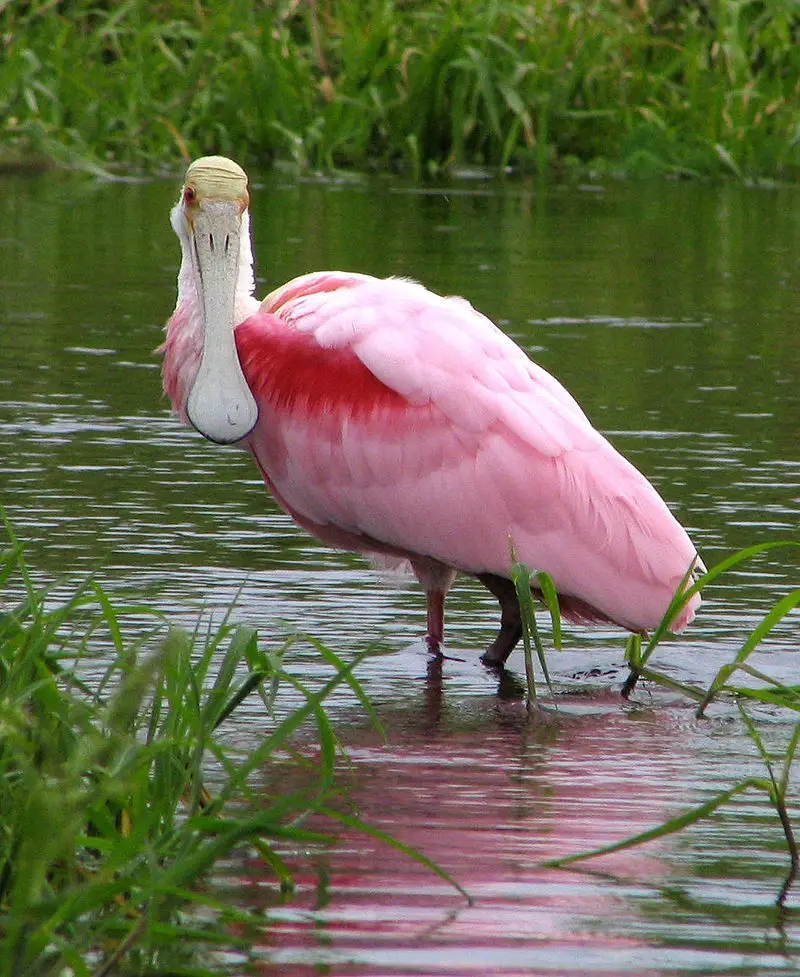
Spoonbills are large wading birds belonging to the genus Platalea. Characterized by their long legs and distinctive spoon-shaped beaks, these birds can be found all over the world except Antarctica.
The name of this genus derives from Ancient Greek meaning “broad”, referring to their bill’s shape.
There are six species of Spoonbill recognized – though they usually form a single group, sometimes it is divided into three genera.
These graceful creatures feed mainly on small aquatic organisms such as insects and fish which they catch with an open-mouth technique while sweeping through shallow waters in search for food.
They typically breed near water bodies during springtime when there’s plenty of food available around them.Scientific classification:
| Kingdom | Animalia |
| Phylum | Chordata |
| Class | Aves |
| Order | Pelecaniformes |
| Family | Threskiornithidae |
| Subfamily | Plataleinae |
| Genus | Platalea Linnaeus, 1758 |
Also Featured In: Birds of South African, Queensland Birds You Should Know
11. Little Tern
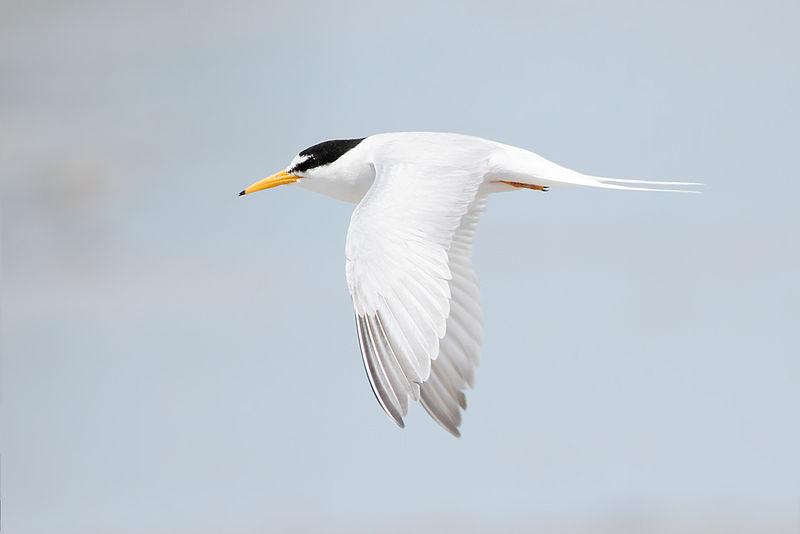
The Little Tern is a delightful seabird belonging to the Laridae family. It has white feathers, with a bright yellow bill and black legs. The species name ‘albifrons’ comes from Latin, meaning “white” and “forehead”.
Formerly they were placed in the genus Sterna which contains large white terns – hence their diminutive size. They can be found around coastal areas of Europe, North America (S.a antillarum) and Red Sea (S.a saundersi).
These birds are known for their graceful flight as they soar above both inland wetlands and marine waters looking for fish to feed on.
Their population numbers have been decreasing due to human impacts such as overfishing so we need to take care that these beautiful creatures continue thriving within our ecosystems.Scientific classification:
| Kingdom | Animalia |
| Phylum | Chordata |
| Class | Aves |
| Order | Charadriiformes |
| Family | Laridae |
| Genus | Sternula |
| Species | S. albifrons |
Also Featured In: Birds of Netherlands, White Birds Commonly Found in Hawaii
12. Cetti’s Warbler
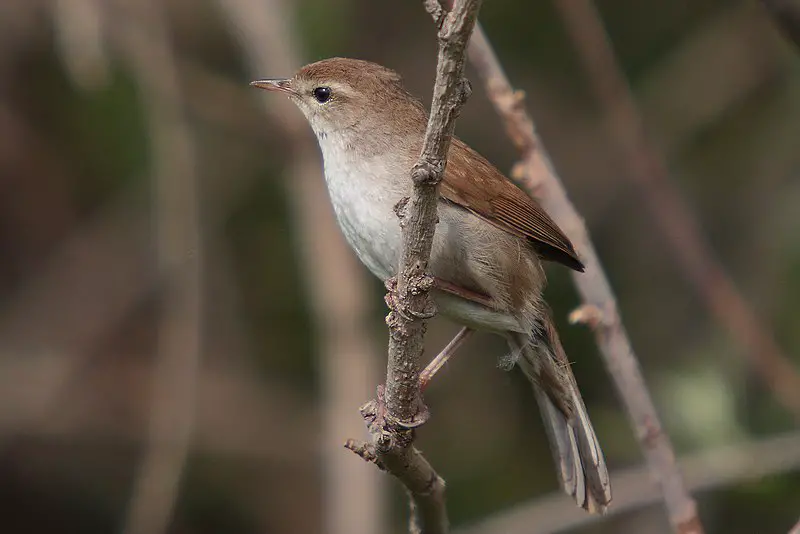
Cetti’s warbler is a small, brown bush-warbler that breeds in southern and central Europe, northwest Africa and the east Palearctic.
It has skulking habits which make it difficult to see but its beautiful song can still be heard throughout these regions.
The bird was named after 18th century Italian zoologist Francesco Cetti due to his research on this species of warblers.
This hardy little bird lives in dense vegetation near marshes, wetlands and other water bodies such as riversides or lakeshores where they feed mostly on insects during their breeding season from April till August.
Despite being shy around humans once accustomed to them they are known to be quite friendly with people who visit their habitat regularly.Scientific classification:
| Kingdom | Animalia |
| Phylum | Chordata |
| Class | Aves |
| Order | Passeriformes |
| Family | Cettiidae |
| Genus | Cettia |
| Species | C. cetti |
Also Featured In: Birds of Czech Republic, Common Serbian Birds
13. Western Marsh Harrier
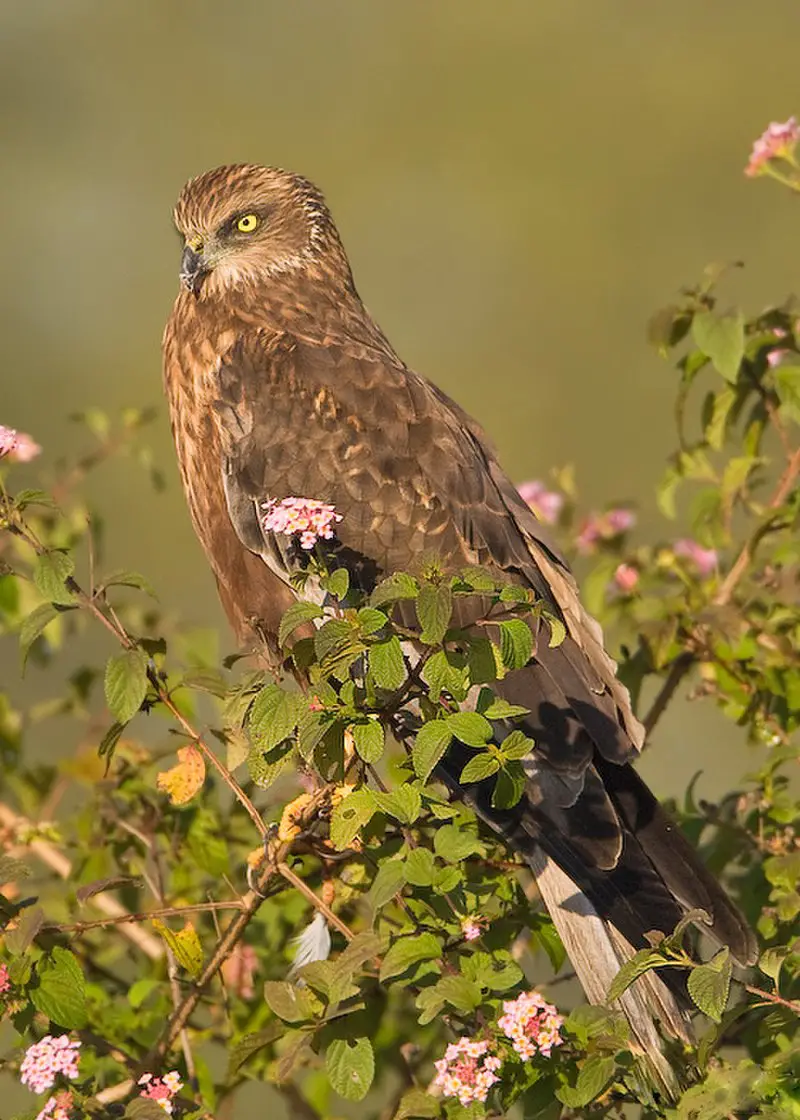
The Western marsh harrier is a large bird of prey that is found throughout temperate and subtropical regions in western Eurasia and Africa.
It has greyish brown plumage with white patches on the underside, yellow eyes, long legs and wingspan reaching up to 1 meter.
This species mainly feeds on small mammals such as rodents and voles which it catches by swooping down from above while flying over marshes or wetlands.
Nesting usually occurs in tall trees near water bodies where they build their nests made out of sticks lined with grasses or feathers.
The female lays 3-5 eggs during breeding season which hatch after an incubation period of 31 days.
They are known for making loud calls when defending its territory against other birds like buzzards and eaglesScientific classification:
| Kingdom | Animalia |
| Phylum | Chordata |
| Class | Aves |
| Order | Accipitriformes |
| Family | Accipitridae |
| Genus | Circus |
| Species | C. aeruginosus |
Also Featured In: Malta birds, Scavengers Birds You Should Know
14. Pink-Footed Goose
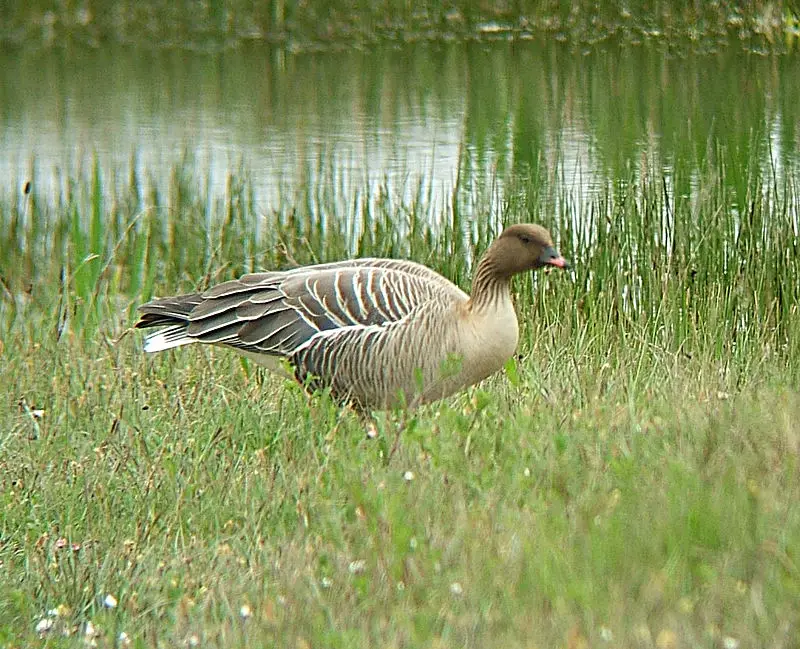
The Pink-footed Goose is a migratory bird which breeds in eastern Greenland, Iceland and Svalbard.
It spends the winter in northwest Europe such as Ireland, Great Britain, Netherlands and western Denmark.
Its name comes from combining Latin for “goose” with ancient Greek words meaning ‘short beak’.
This species has pink legs and feet along with an orange bill. They have grey-brown upperparts and white underparts making them easy to identify amongst other geese.
Their diet consists mainly of grasses but they also eat grains like wheat or barley when available.
The population size of this species is increasing due to conservation efforts made by many countries across Europe who are dedicated to protecting these birds throughout their migration journey each year.Scientific classification:
| Kingdom | Animalia |
| Phylum | Chordata |
| Class | Aves |
| Order | Anseriformes |
| Family | Anatidae |
| Genus | Anser |
| Species | A. brachyrhynchus |
Also Featured In: Iceland birds, Birds that Live in Greenland
15. Snow Bunting
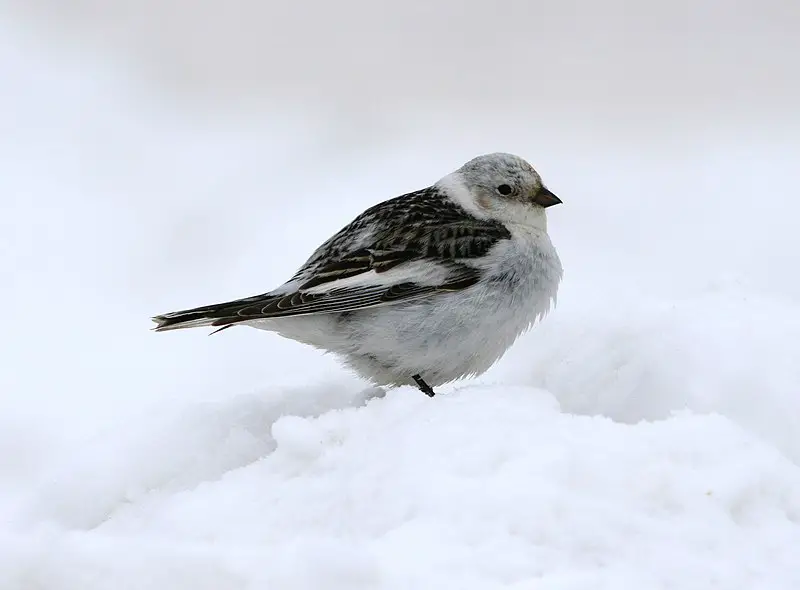
The snow bunting is a small and colourful passerine bird found in the Arctic regions of the northern hemisphere.
With its bright white feathers, black markings on its wings and tail, it stands out amongst other birds that inhabit these cold climates.
This species has adapted well to surviving in this harsh environment; they nest under boulders or rocks so their eggs are shielded from predators and blizzards alike.
They feed mainly on insects during summer months but switch to seeds when winter arrives as they seek food sources which will not freeze over with ice.
The snow bunting is an important part of the local ecosystem due to providing sustenance for larger animals such as foxes and owls who rely upon them for survival throughout wintertime.Scientific classification:
| Kingdom | Animalia |
| Phylum | Chordata |
| Class | Aves |
| Order | Passeriformes |
| Family | Calcariidae |
| Genus | Plectrophenax |
| Species | P. nivalis |
Also Featured In: Most Common Winter Birds, Flocks Birds around Us
16. Red Crossbill
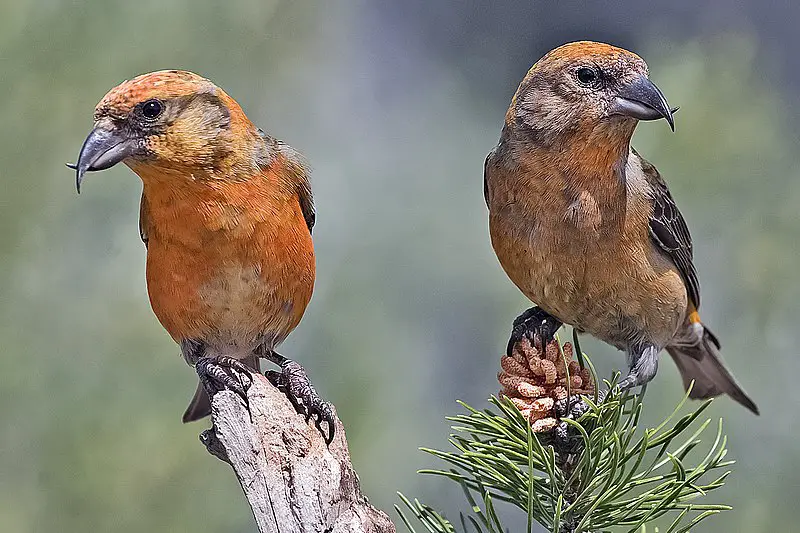
The Red Crossbill is a small passerine bird belonging to the finch family. It has distinctively crossed mandibles, which it uses to extract seeds from conifer cones and other fruits.
This species can be identified by its vivid colouring; males are red or orange in hue whilst females tend to have more green or yellow feathers.
Furthermore, there is considerable variation between individuals of this species when it comes to their beaks size and shape as well as their calls—which range from short trills through chirps and harsh cackles up until loud rattling sounds at times.
They’re an interesting sight in many parts of Europe, particularly during winter months where they often feed on pine cone seeds that drop down onto lower branches of trees.Scientific classification:
| Kingdom | Animalia |
| Phylum | Chordata |
| Class | Aves |
| Order | Passeriformes |
| Family | Fringillidae |
| Subfamily | Carduelinae |
| Genus | Loxia |
| Species | L. curvirostra |
Also Featured In: Finches Species, Common Birds in Saskatchewan
17. Rough-Legged Buzzard
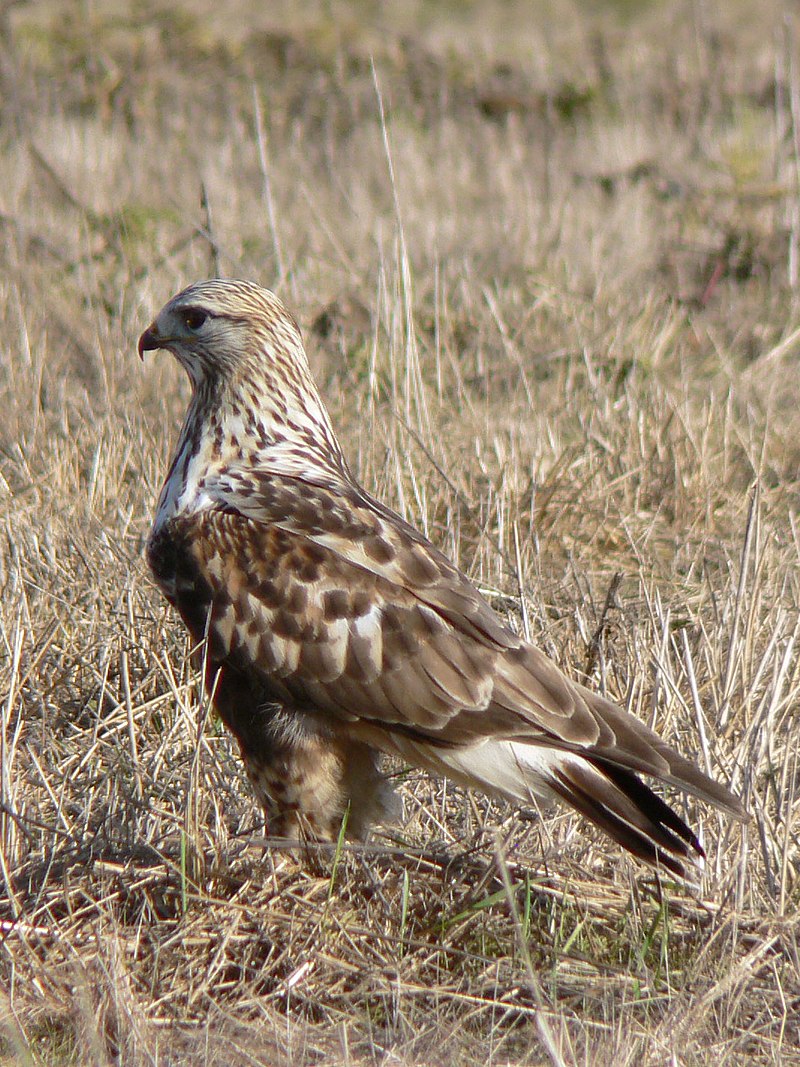
The Rough-legged Buzzard, also known as the Rough-legged Hawk, is a medium to large bird of prey that inhabits Arctic and Subarctic regions in North America, Europe and Russia.
It migrates south during winter. These majestic birds build their nests on cliffs or other rocky ledges making them difficult to spot from afar.
Their plumage can be either dark brown or light with barred underparts and a white head – depending on seasonality.
They have long wings which helps them cover incredible distances while migrating but they are by no means fast flyers – preferring instead soaring flight patterns where possible.
The primary diet for these raptors consists of small rodents such as voles and lemmings however they will take larger prey if needed (such as grouse).Scientific classification:
| Kingdom | Animalia |
| Phylum | Chordata |
| Class | Aves |
| Order | Accipitriformes |
| Family | Accipitridae |
| Genus | Buteo |
| Species | B. lagopus |
Also Featured In: birds of Massachusetts, Most Common Romanian Birds
18. Horned Lark
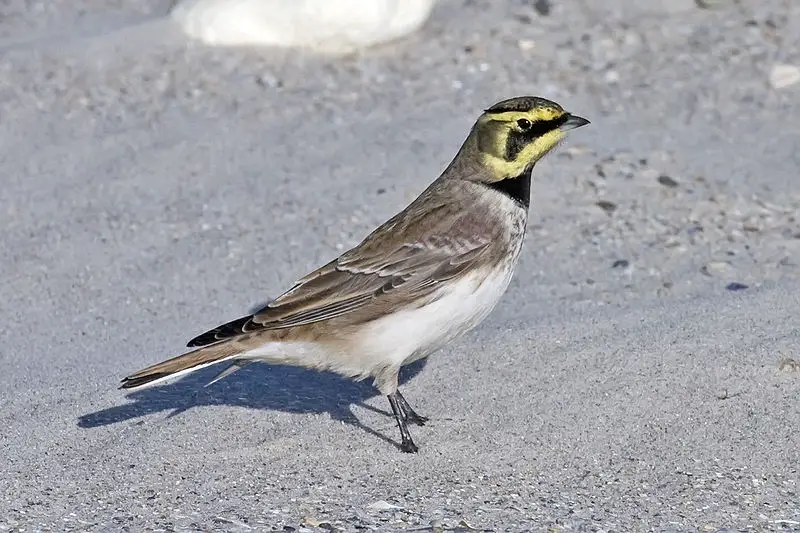
The Horned Lark, known as the Shore Lark in Europe and North America, is a species of lark belonging to the family Alaudidae.
It can be found across the northern hemisphere and has been classified under its Latin name Eremophila alpestris which means “of high mountains”, referring to its prevalence in mountainous areas like the Alps.
This bird is distinguished by two black tufts or ‘horns’ on either side of its head. Its size varies from 11-13 cm long with brown upperparts and pale whitish underparts sporting darker streaks throughout them both.
With an adaptation for ground nesting, it builds nests out of grasses lined with feathers near open fields where food sources are abundant such as insects, grains and seeds giving this species great potential for survival even when conditions may become harsh during winter months.Scientific classification:
| Kingdom | Animalia |
| Phylum | Chordata |
| Class | Aves |
| Order | Passeriformes |
| Family | Alaudidae |
| Genus | Eremophila |
| Species | E. alpestris |
Also Featured In: birds of Vermont, Ukrainian Birds You Should Know
19. European Honey Buzzard
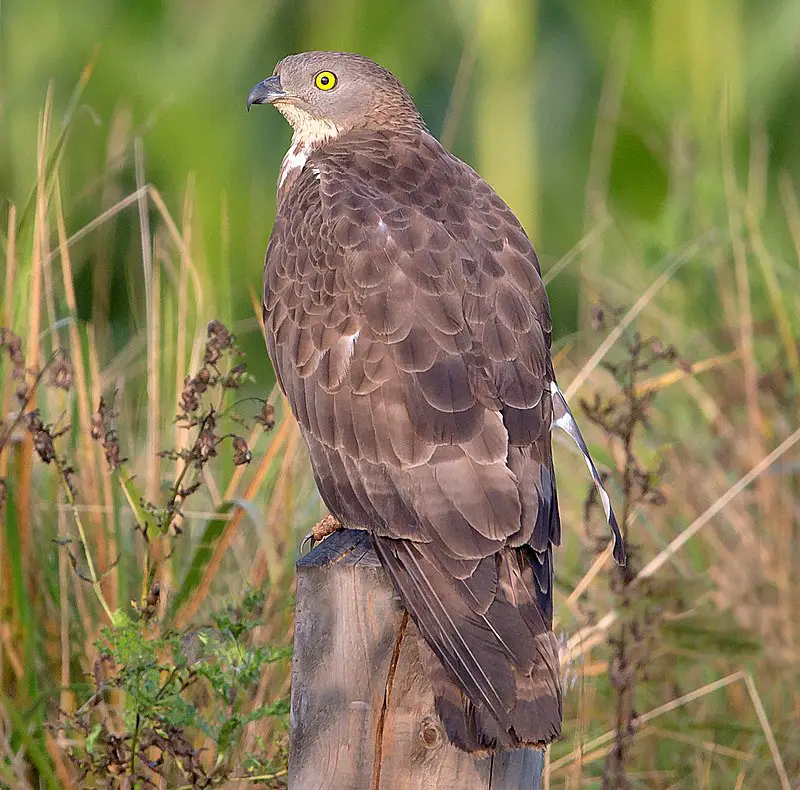
The European honey buzzard is a bird of prey belonging to the Accipitridae family. Contrary to its name, it is not closely related to true buzzards but rather to kites.
The name Pernis apivorus comes from Greek and Latin, meaning a bird of prey that eats bees.
This species can be found throughout Europe, as well as in parts of Asia and Africa, and is mostly known for its unique feeding habits; it primarily feeds on the larvae and nests of bees and wasps.
With a wingspan of up to 150 cm, it is a relatively large bird that is known for its soaring flight and striking plumage, featuring a mix of light and dark feathers.
Despite its classification as a bird of prey, the European honey buzzard is not considered a significant threat to humans or livestock.Scientific classification:
| Kingdom | Animalia |
| Phylum | Chordata |
| Class | Aves |
| Order | Accipitriformes |
| Family | Accipitridae |
| Genus | Pernis |
| Species | P. apivorus |
Also Featured In: Most Common Lithuanian Birds, Moscow Birds You Need to See
20. Common Firecrest
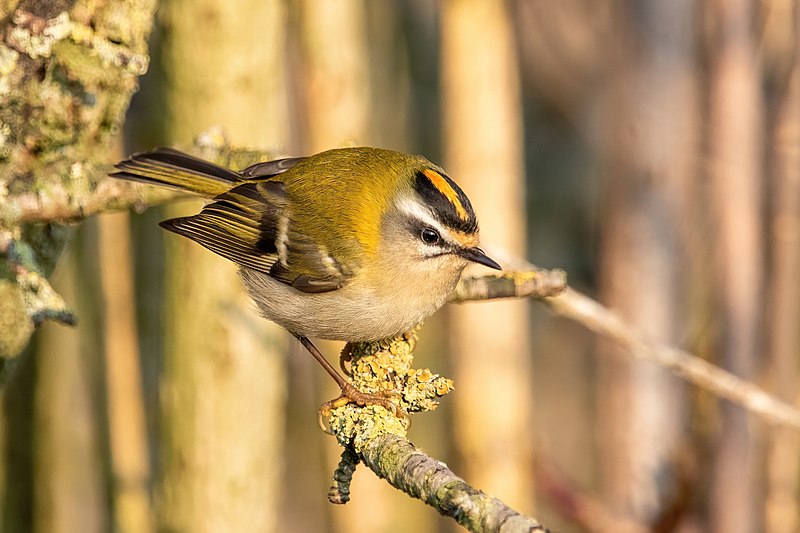
The Common Firecrest, a tiny bird from the kinglet family, is found in temperate Europe and northwest Africa. It is known for its bright orange and black striped crest which distinguishes it from other kinglets.
This bird is partially migratory, with those in central Europe moving southwards during winters.
The Firecrest breeds in different parts of its range and has a unique subspecies in the Balearic Islands and North Africa.
Despite being small, this bird has a melodious song and can be heard singing during the breeding season.
The Common Firecrest is a fascinating bird that adds color and charm to the forests and woodlands it inhabits.Scientific classification:
| Kingdom | Animalia |
| Phylum | Chordata |
| Class | Aves |
| Order | Passeriformes |
| Family | Regulidae |
| Genus | Regulus |
| Species | R. ignicapilla |
Also Featured In: Flight Birds You Should Know, Birds that can be Seen in October
21. Wryneck
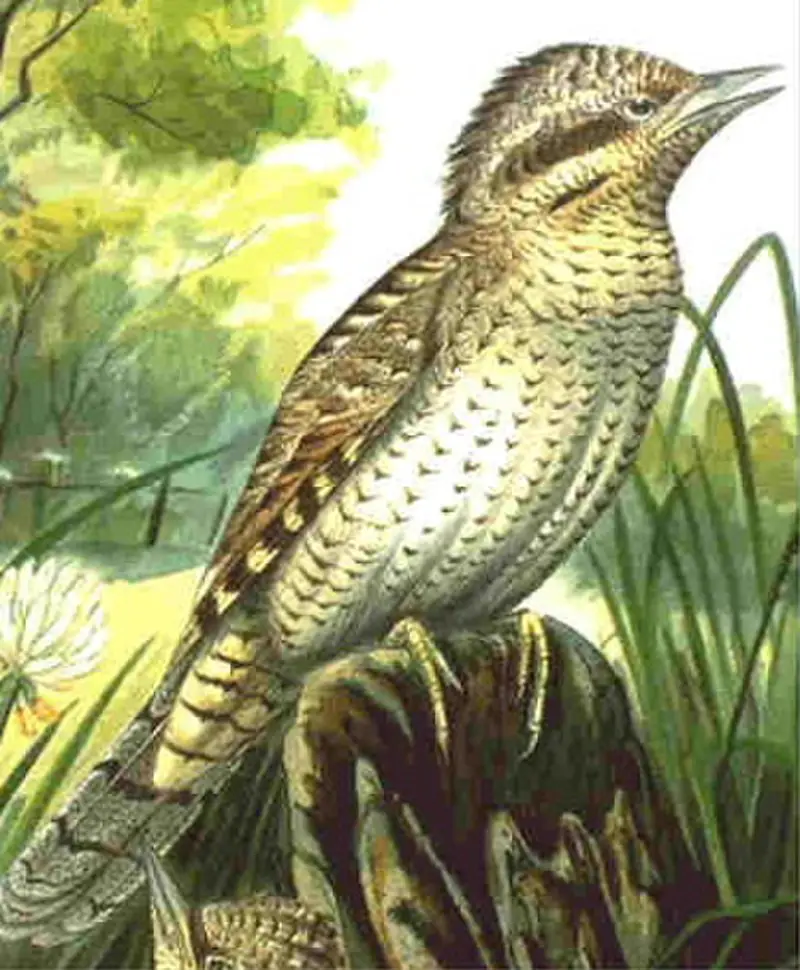
The wryneck is a unique type of small woodpecker found in the Old World. It belongs to the Jynx genus and is named after the Greek word iunx.
These birds are known for their ability to turn their heads almost completely around, which they use as a threat display when disturbed at their nest.
This behavior, combined with their hissing, has earned them the nickname “snake-bird”.
Although small, wrynecks are distinctive in their appearance and behavior, making them an interesting bird to observe.Scientific classification:
| Kingdom | Animalia |
| Phylum | Chordata |
| Class | Aves |
| Order | Piciformes |
| Family | Picidae |
| Genus | Jynx Linnaeus, 1758 |
Also Featured In: Common Cornwall Birds, Most Popular Birds in Mallorca
22. Norfolk Parakeet
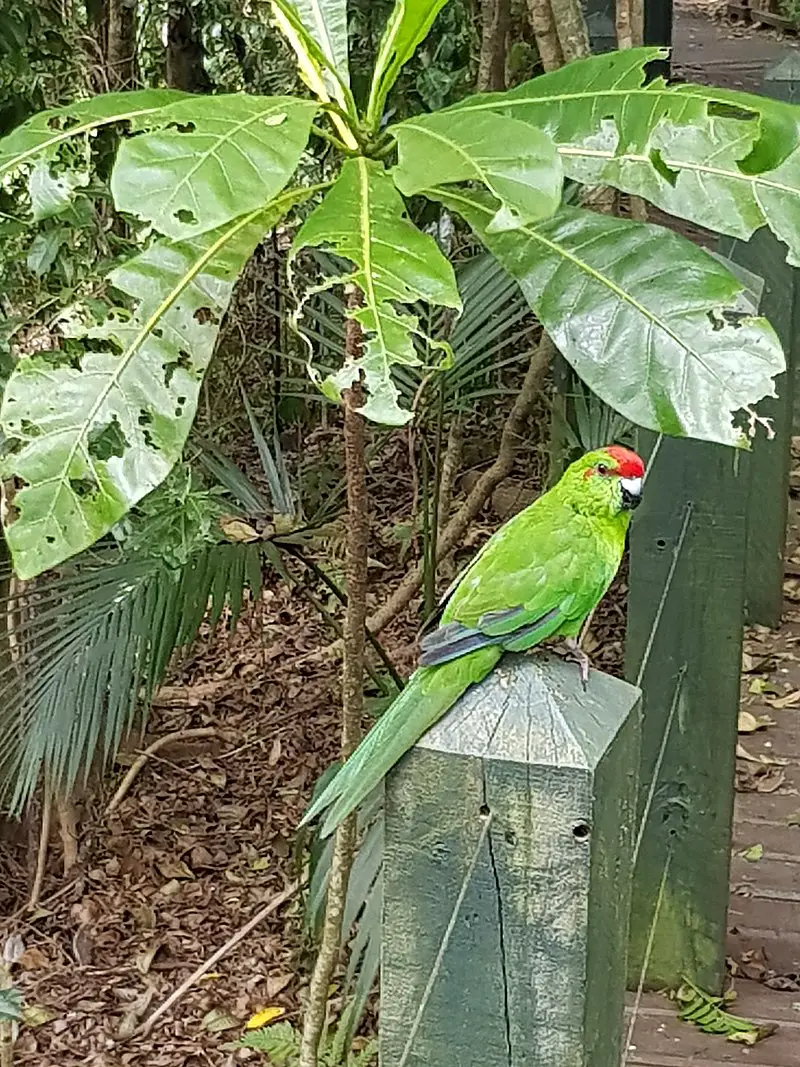
The Norfolk parakeet, also known as the Tasman parakeet, is a rare species of parrot that only resides on Norfolk Island in the Tasman Sea.
This bird is a part of the Psittaculidae family and was first described by George Robert Gray in 1859. Its scientific name is Cyanoramphus cookii.
The Norfolk parakeet has a beautiful red-crowned head and green plumage. Due to loss of habitat, the bird is classified as endangered, and conservation efforts are in place to protect its population.
With its unique characteristics and natural habitat, the Norfolk parakeet is considered a prized treasure of the Tasman Sea.Scientific classification:
| Kingdom | Animalia |
| Phylum | Chordata |
| Class | Aves |
| Order | Psittaciformes |
| Family | Psittaculidae |
| Genus | Cyanoramphus |
| Species | C. cookii |
23. Norfolk Kākā

The Norfolk kākā was a large parrot that is now extinct. It belonged to the Nestoridae family and was about 38 cm long with olive-brown upperparts, orange cheeks and throat.
Its breast, thighs, rump, and lower abdomen were straw-colored with a dark orange beak. The Norfolk kākā was found on Norfolk Island and nearby Phillip Island, inhabiting the rocks and treetops of the area.
Despite its extinction, the Norfolk kākā remains an interesting and important study subject for scientists and ornithologists.
It serves as a reminder of the importance of conservation efforts to protect endangered species and their habitats.Scientific classification:
| Kingdom | Animalia |
| Phylum | Chordata |
| Class | Aves |
| Order | Psittaciformes |
| Family | Strigopidae |
| Genus | Nestor |
| Species | †N. productus |
24. Long-Tailed Jaeger
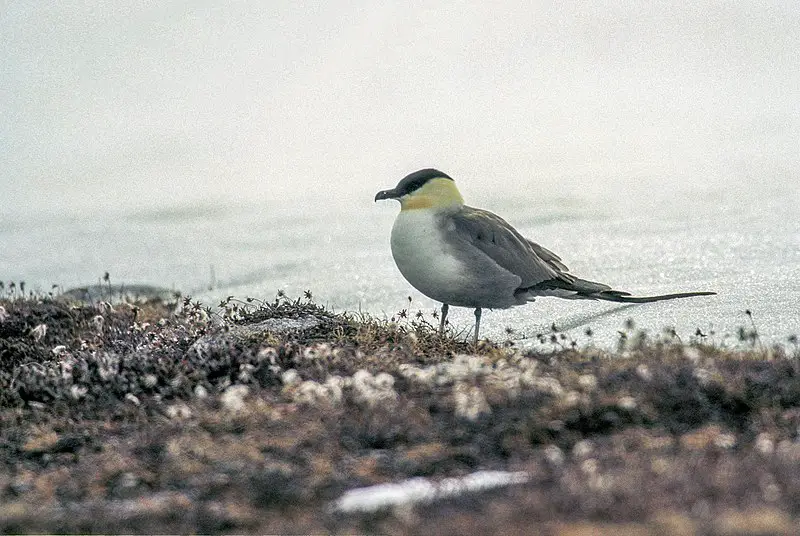
The long-tailed jaeger is a predatory seabird known for its slender, pointed wings and long, forked tail. It belongs to the skua family and is often referred to as a “hunter” due to its hunting prowess.
The bird’s name derives from the Faroese name for the great skua, which is also called the “skúgvur”.
The long-tailed jaeger is usually found in Arctic regions and is known to migrate long distances. This bird is particularly skilled at robbing other birds of their catches and is often seen chasing gulls and terns.
The long-tailed jaeger has a brownish-grey plumage with a black cap and collar. It is a beautiful and impressive bird, known for its incredible flying skills and its tenacity when it comes to hunting.Scientific classification:
| Kingdom | Animalia |
| Phylum | Chordata |
| Class | Aves |
| Order | Charadriiformes |
| Family | Stercorariidae |
| Genus | Stercorarius |
| Species | S. longicaudus |
Also Featured In: Birds that Live in Svalbard, Common Northwest Territories Birds
25. Pectoral Sandpiper
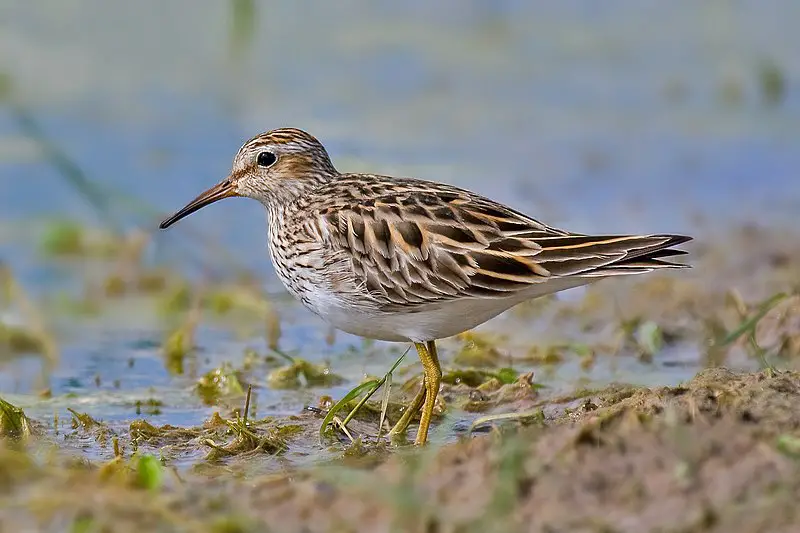
The Pectoral sandpiper is a migratory wader that can be found in North America and Asia, but can be seen in South America and Oceania during the winter.
This small bird primarily feeds on small invertebrates. It creates a deep hole in the ground lined with thick materials to protect its four eggs from harsh weather conditions during breeding.
Measuring 21 cm (8.3 in) in length and with a wingspan of 46, the Pectoral sandpiper is a small bird that is easy to spot.Scientific classification:
| Kingdom | Animalia |
| Phylum | Chordata |
| Class | Aves |
| Order | Charadriiformes |
| Family | Scolopacidae |
| Genus | Calidris |
| Species | C. melanotos |
Also Featured In: Birds That Live in Spitsbergen, Most Common Birds of Sierra Islands
26. Tundra Bean Goose
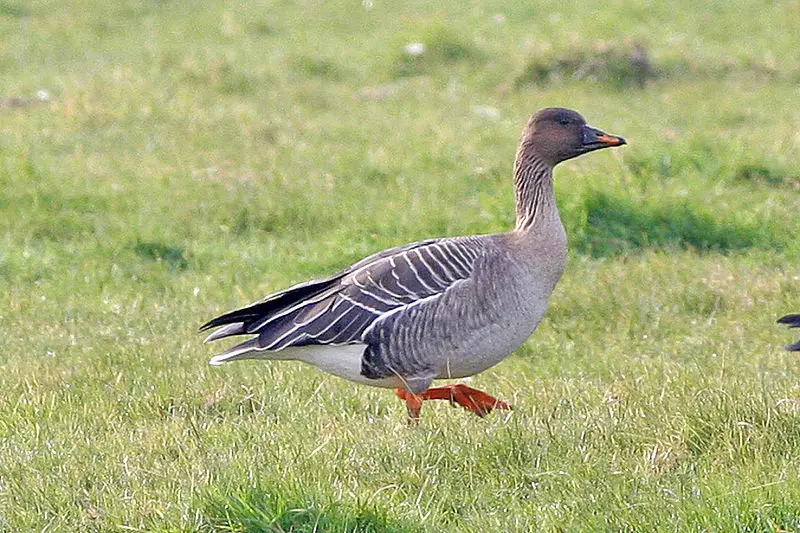
The Tundra bean goose, native to northern Siberia, is a migratory bird that winters in Asia. It is a separate species of the bean goose, along with the Taiga bean goose, according to the American Ornithological Society and International Ornithologists’ Union.
The Tundra bean goose is recognized for its unique features, including its serrirostris beak. This goose species is an important part of the ecosystem in its breeding and wintering grounds.Scientific classification:
| Kingdom | Animalia |
| Phylum | Chordata |
| Class | Aves |
| Order | Anseriformes |
| Family | Anatidae |
| Genus | Anser |
| Species | A. serrirostris |
Also Featured In: Tundra Birds, Birds of Taiga